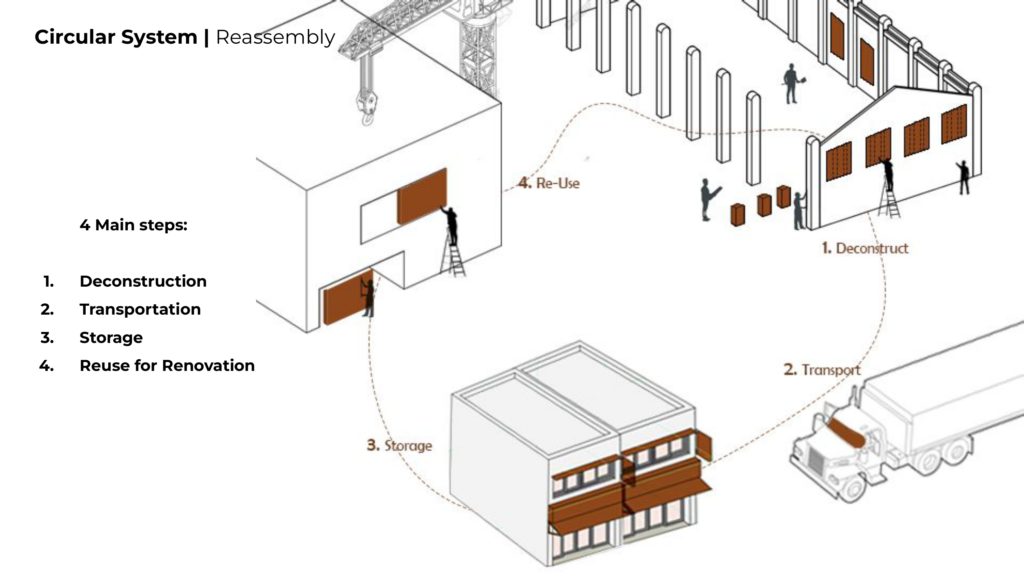Some of the Circular Matter course’s main objectives were for the students to understand the basics of the circular economy and to be able to map the material flows and their embodied carbon through the lifecycle while also being familiar of the environmental impact caused by our specified analyzed materials. Bricks were our chosen material of analysis.
“Bricks” is one of the projects about the material story of the Atelier building of IAAC and its GWP analyses. The first phase of the project focuses on the types of bricks and their CO2 release during the manufacturing and construction process. Second phase of the project is about the deconstruction scenario and proposal of the brick walls and columns of the building and their reusability potential with minimum negative environmental effect.
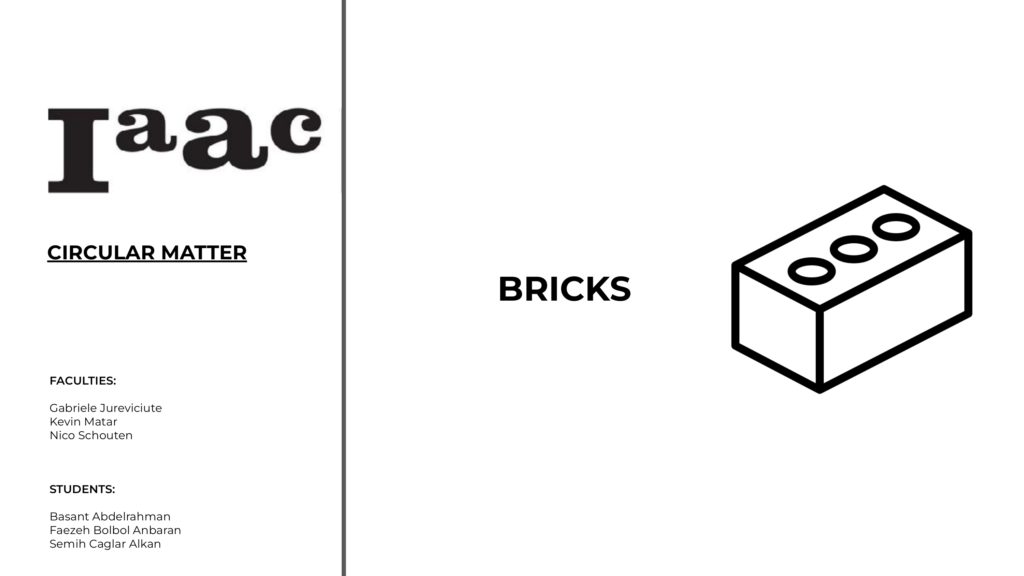
The first aspect of our project was to identify the locations of where brick has been used in the construction of the Atelier. It is important to note that during this study we were able to find different types of bricks as well as newly added bricks into the original construction.
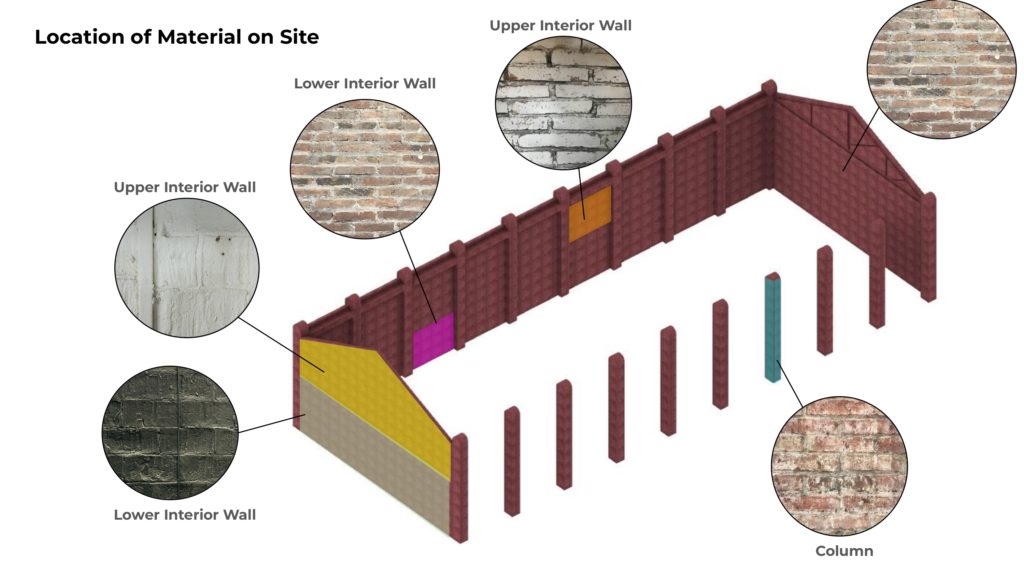
We started our GWP calculations based on the “Environmental Product Declaration” report that states the values for the parameters used to calculate the different stages of the life of the bricks.
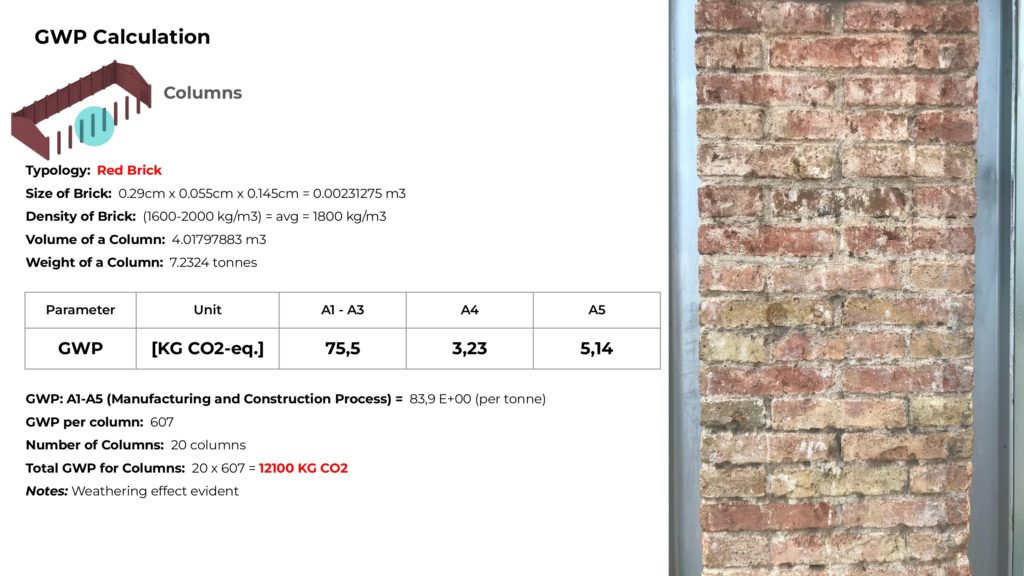
It was important note all the different types of bricks such as “Red Bricks” and “Clay Hollow Bricks” as they consist of different parameters.
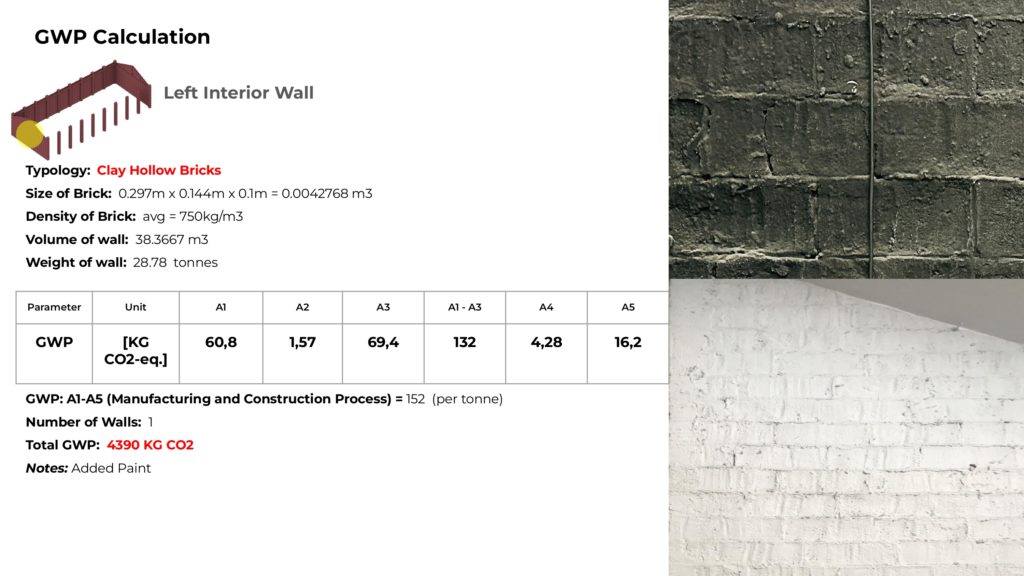
In our GWP calculation, we must also account for the paint used as it is important to factor in any changes applied to the bricks
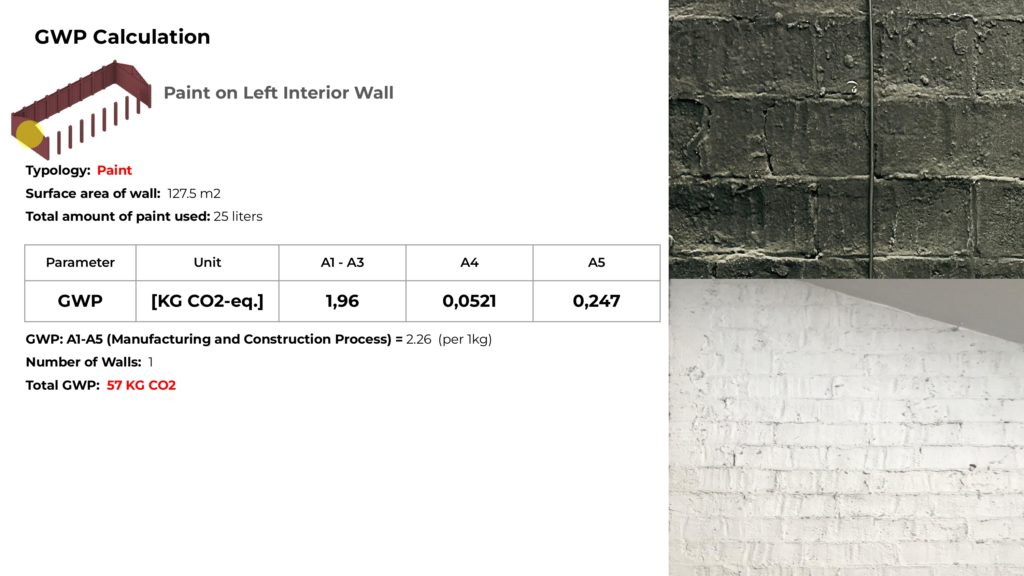
As mentioned before, we accounted for the newly added in bricks as well, as they count in the overall GWP of the Atelier.
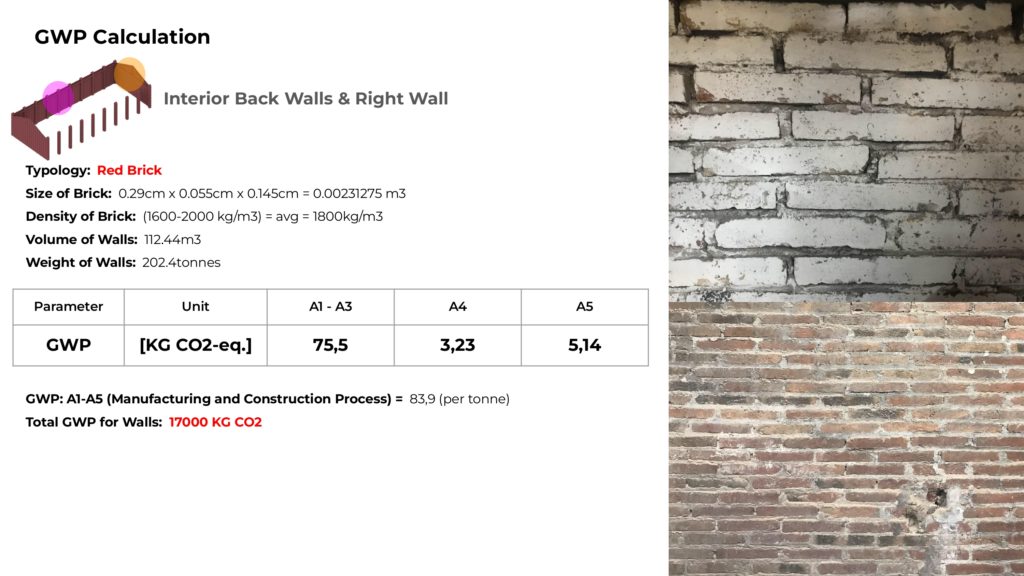
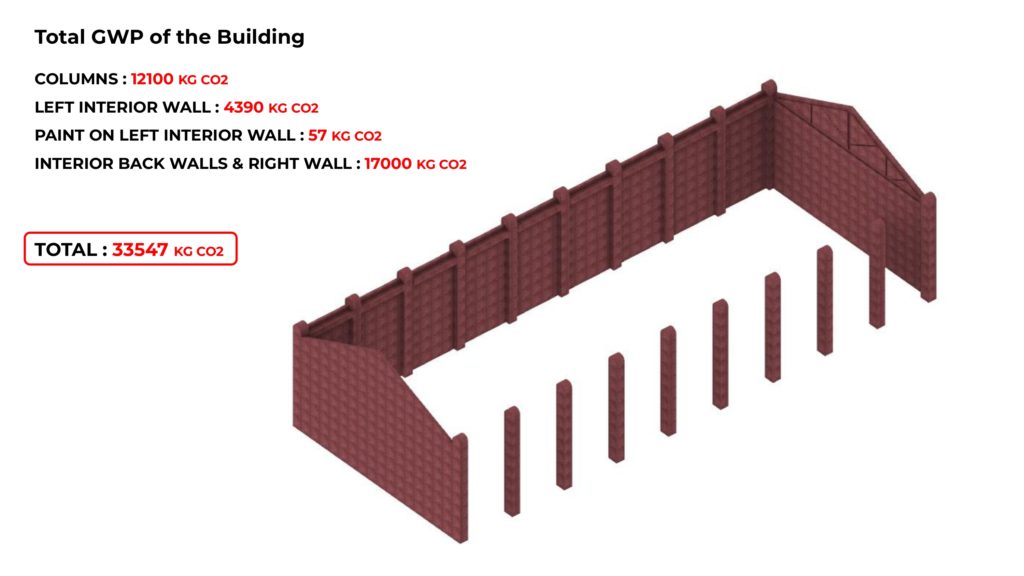
We then created a diagram to illustrate the material story of bricks from Production Stages to Construction use.
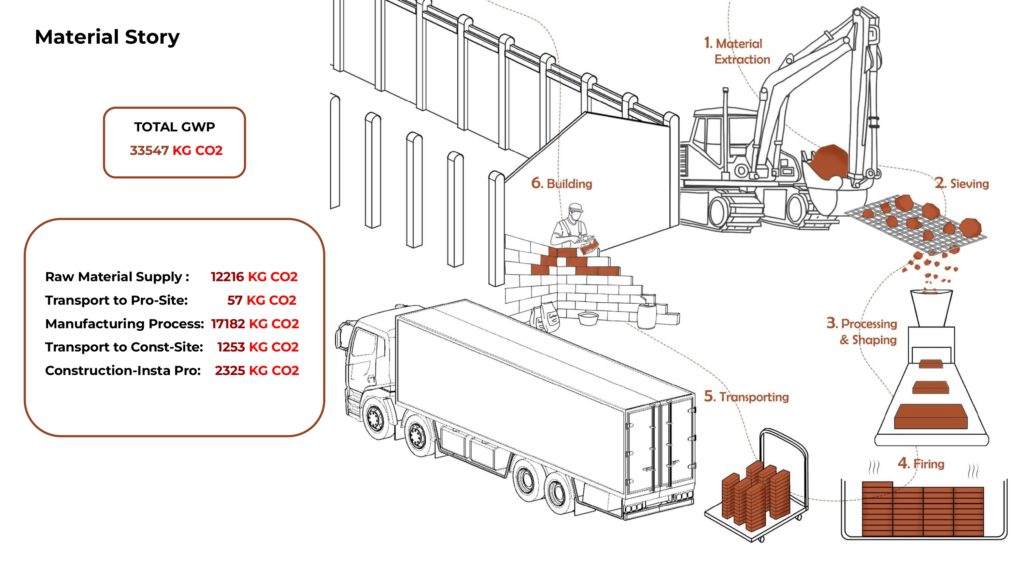
Assessing the bricks used in the Atelier was an important task to understand how to deconstruct our bricks and re-use our bricks elsewhere.
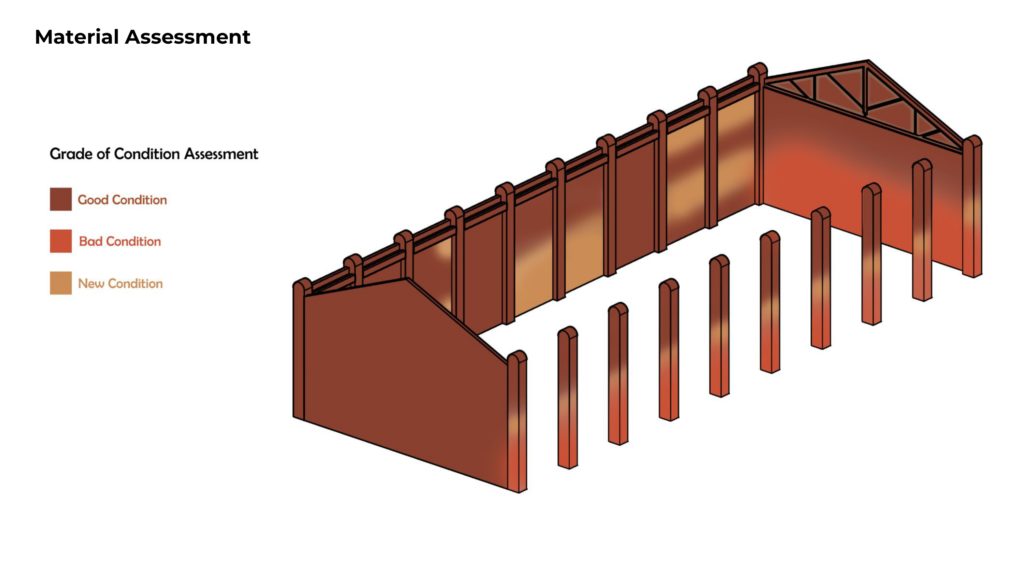
In the second phase of the workshop, we start to deconstruct our brick material in order to recognize how much material we can salvage.
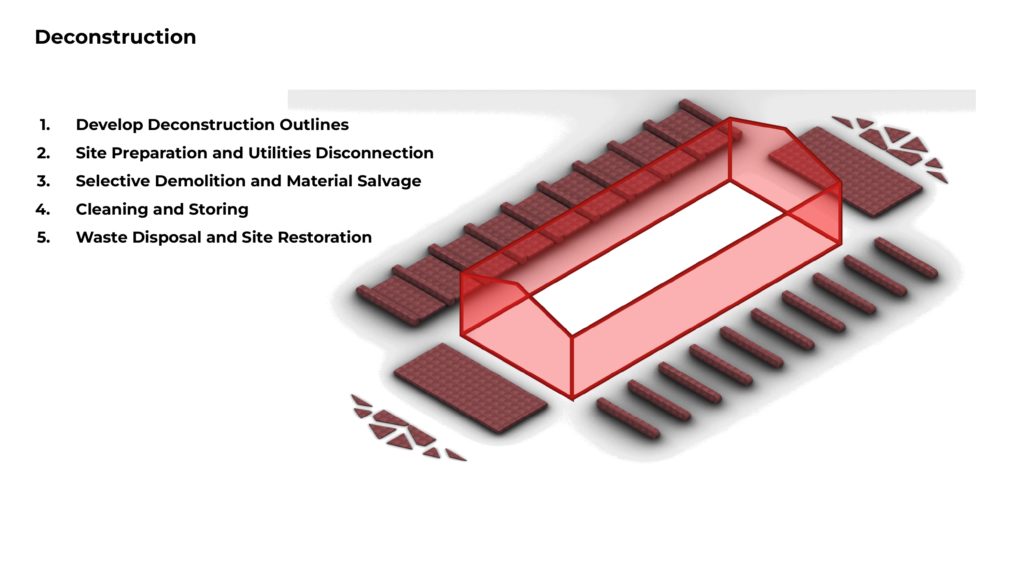
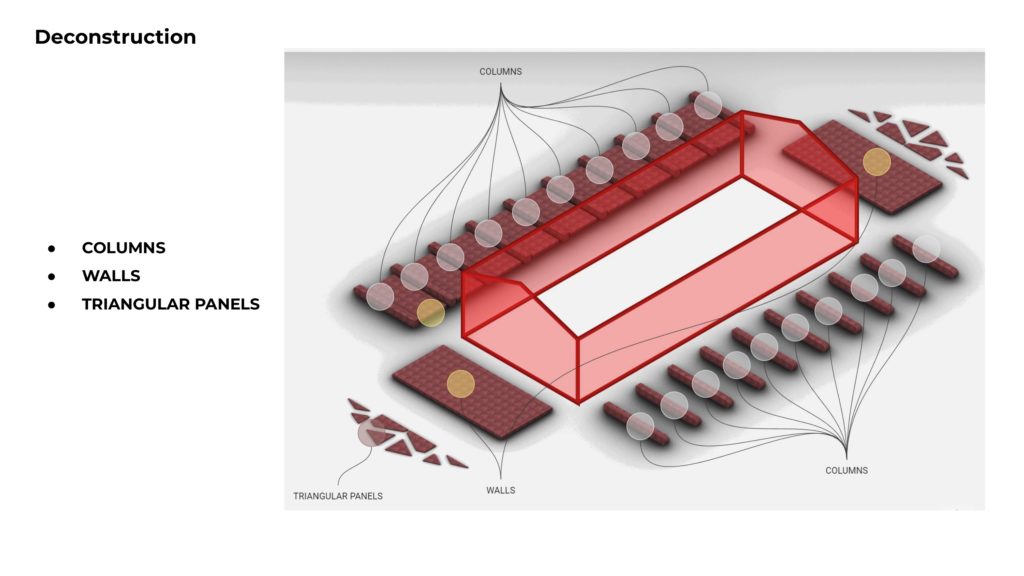
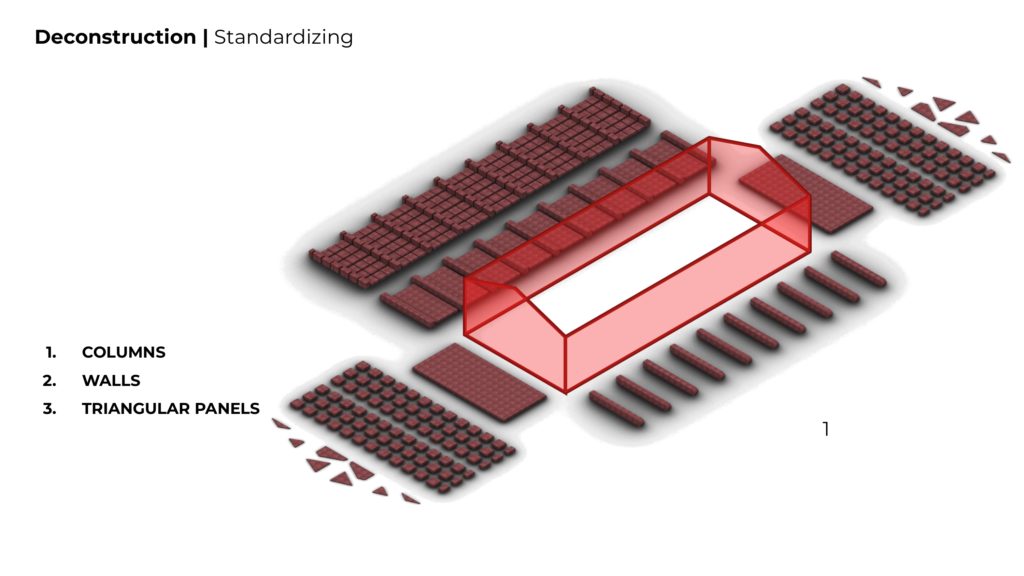
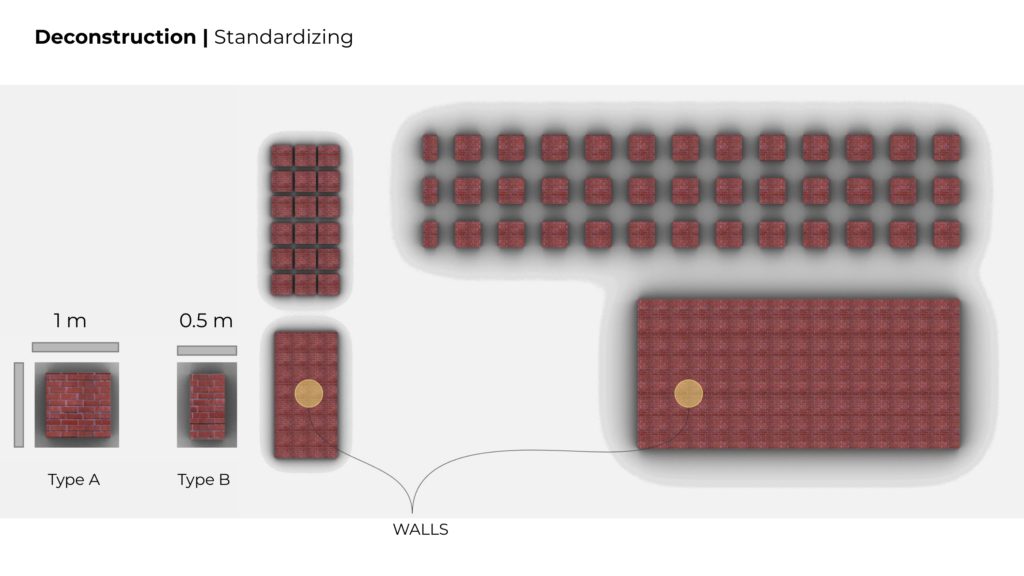
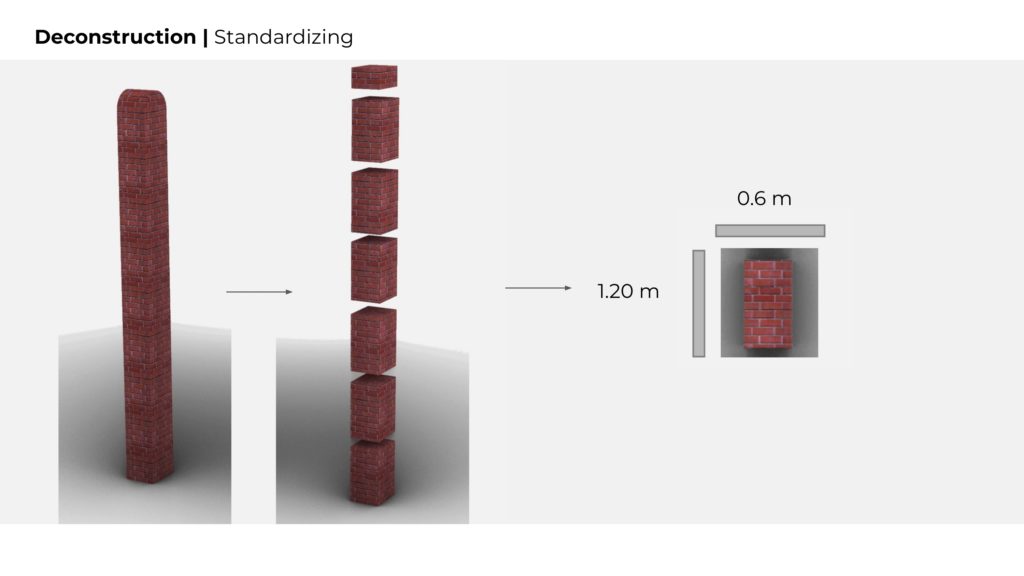
As for our third phase, we begin to analyze the State of the art, specifically to gain a perspective on how red bricks can be re-used instead of simply recycling or taken to landfills.
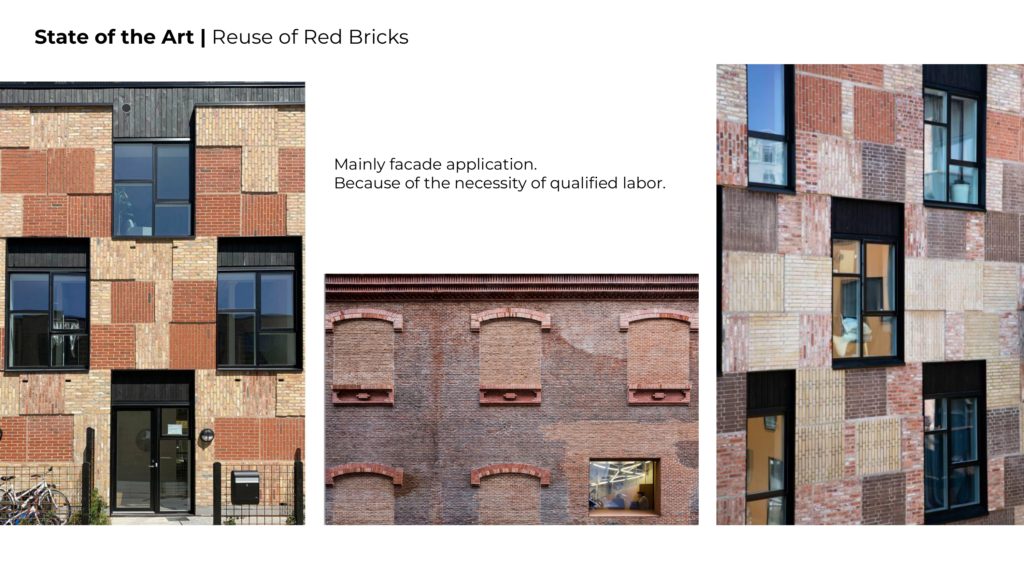
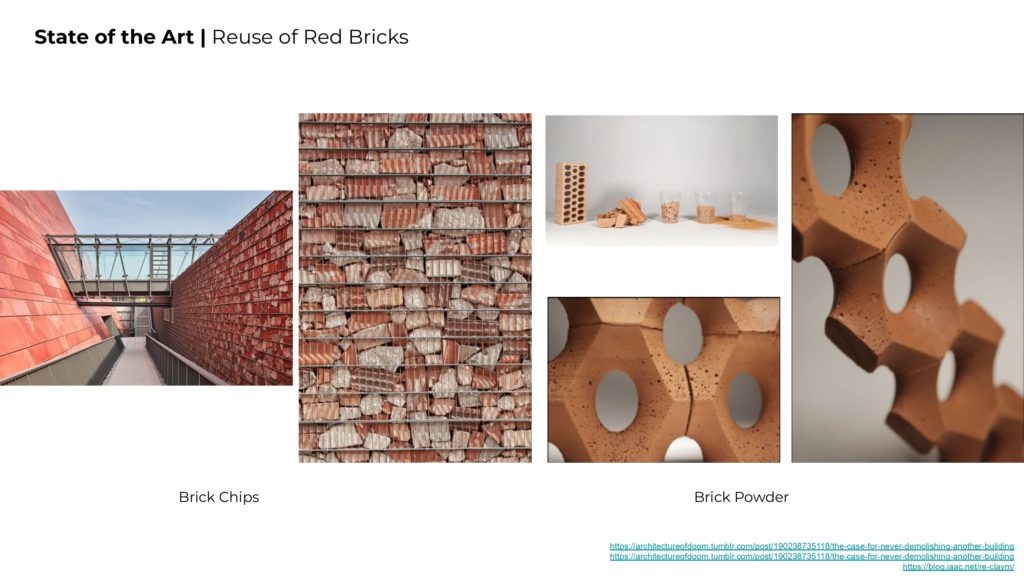
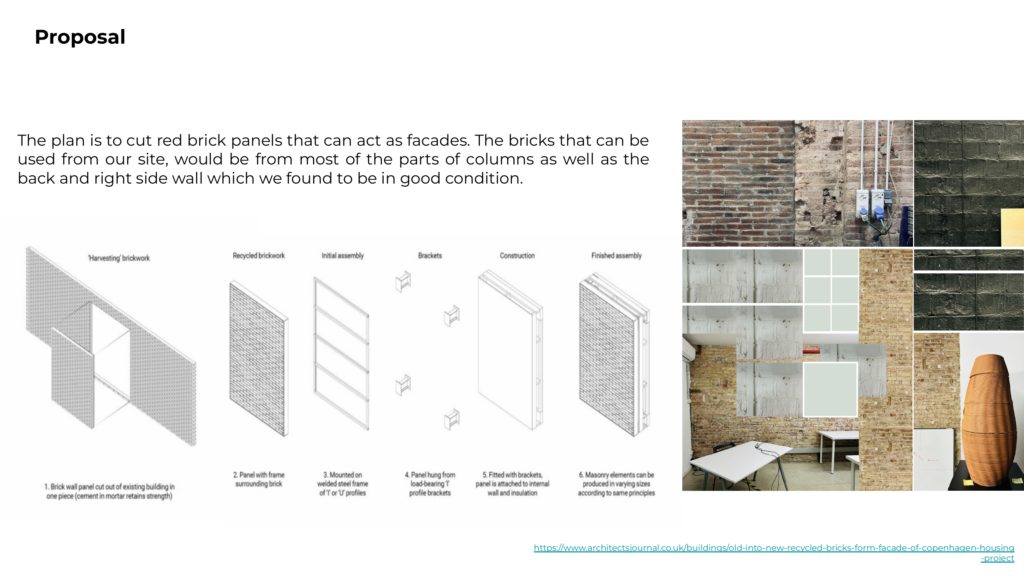
We created a diagram to highlight the proposal of a circular system that allows deconstructed brick panels to gain another life by being inserted as they are in perhaps renovation projects or for facades in new buildings.
